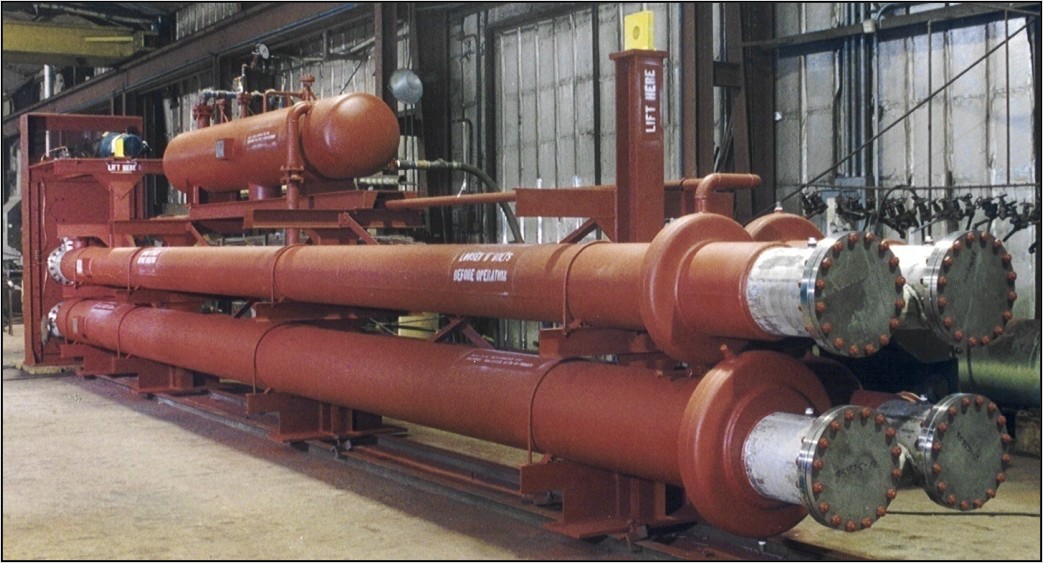Scraped surface or scraped wall heat exchangers have been used in one form or another for around 100 years. The oldest one encountered was probably made in the late 19th or early 20th Century and consisted of a large half Vat, similar to a Wine Barrel, which was processing candle wax. The scraper mechanism looked like a rudder from an old sailing ship. The movement caused an agitation which removed wax from the wall and served as an agitator. Most of the early manufacturers have long ceased production. Now, Armstrong Chemtec Group is the largest manufacturer of Scraped Surface Heat Exchangers used for dewaxing lube oil to manufacture Paraffin Wax and crystallization of both organic and inorganic mixtures and chemical crystallization. The food industry is served by manufacturers such as Alfa Laval with their Contherm HEX and Votator and SPX.

The Scraped Surface Heat Exchanger, designed by Armstrong, works by continuously controlled cooling of a process stream, causing crystals to form. These crystals adhere to the inner face of the inner pipe of a double pipe configuration. Crystals preferentially adhere to the inner pipe wall and thus inhibit heat transfer from taking place. Blades, held by Springs, which are attached to a centrally rotating positioned Shaft, scrape off the crystals without causing damage to them and allow more crystals to form. The crystals pass out of the SSHE as a slurry in solution. Exiting the SSHE, the slurry is put through some separation device, depending on the fragility and morphology of the crystals, such as a Centrifuge or a vacuum Filter. The crystals are then removed, either as a high purity, high-value product or as a waste product (such as crystallization of inorganic salts from wastewater).
SCRAPED SURFACE HEAT EXCHANGERS
Scraped surface heat exchangers (SSHEs) are often used in the food, chemical, and pharmaceutical industries to enhance heat transfer, crystallization, and other continuous processes. They are ideally suited for products that are viscous, sticky, that contain particulate matter or to produce crystals. Since these characteristics describe most processed foods, SSHEs are especially suited for pumpable food products. During operation, the product is brought in contact with a heat transfer surface that is rapidly and continuously scraped, thereby exposing the surface to the untreated product. In addition to maintaining high and uniform heat exchange, the scraper blades also provide a degree of simultaneous mixing and agitation. Heat exchange for viscous foods such as salad dressings, margarine, chocolate, peanut butter, ice cream, and shortenings is made possible using SSHEs. High heat transfer coefficients are achieved because the heat transfer surface is continuously exposed to the incoming new process fluid. As the product is in contact with the heating surface for a short time, high-temperature gradients may be used without the danger of causing undesirable reactions.
RELATED READING ABOUT SCRAPED SURFACE HEAT EXCHANGERS
- Reasons to Use Scraped Surface Heat Exchangers
Our continuous scraped surface heat exchangers consist of double pipe elements that are commonly used for cooling viscous and cooling crystallization duties.
- Learning About Ammonia Vaporizers
There are three main types of ammonia vaporizers. Knowing the differences between the three types is helpful when searching for a new ammonia vaporizer.
- The Function of Scraped Surface Heat Exchangers
